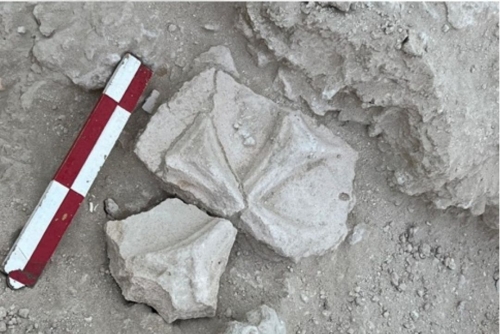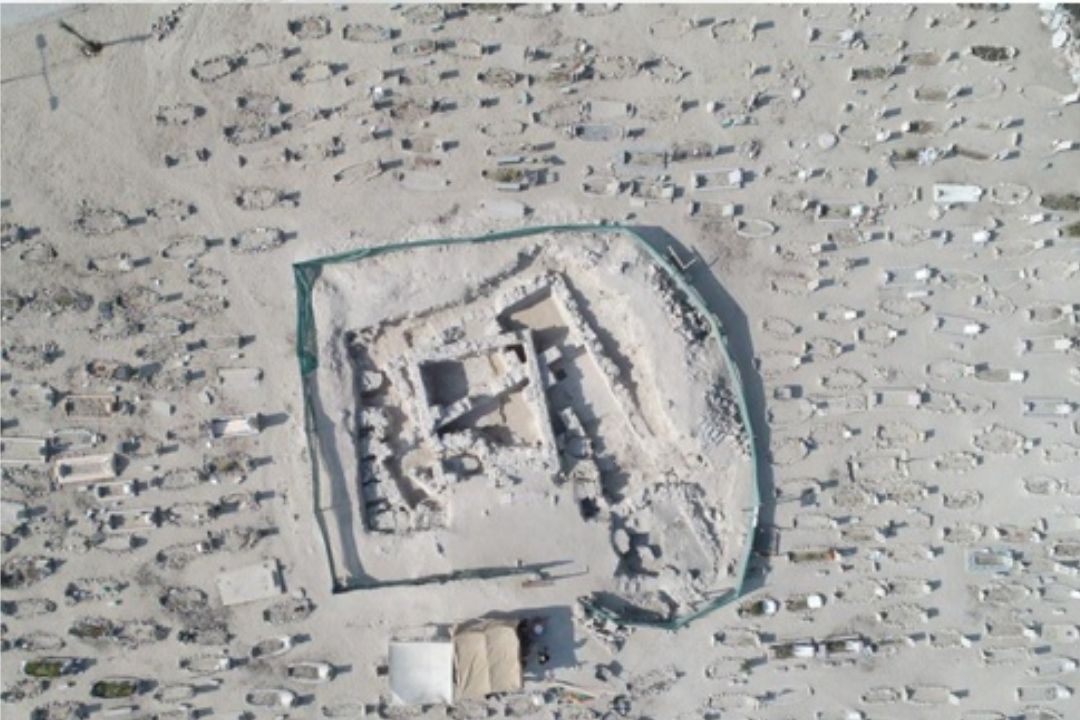Ancient Christian Building Found in Bahrain Offers Glimpse into Early Church History
TDT | Manama
The Daily Tribune - www.newsofbahrain.com
Archaeologists from Bahrain and the United Kingdom have unearthed what is believed to be one of the oldest Christian buildings in the Arabian Gulf, providing tangible evidence of a Christian community that thrived for centuries in the region, a report published on the Bahrain News Agency (BNA) uncovered.
While Christianity is not primarily associated with Gulf countries today, the Church of the East, also known as the Nestorian Church, flourished in the area for centuries until the 7th century AD, the report highlighted, pointing out that this period coincided with the gradual conversion of the region's communities to Islam, beginning in 610 AD.
Radiocarbon dating conducted by archaeologists at the Samaheej archaeological site in Muharraq, Bahrain, confirmed the building was inhabited from the mid-4th to the mid-8th centuries AD. It appears to have been abandoned after Islam spread among the local population.
The excavation project, a joint effort between the Bahrain Authority for Culture and Antiquities (BACA) and a British team led by Professor Timothy Insoll from the University of Exeter, began in 2019. The significant findings were revealed in 2023.
Excavations began at a mound in the Samaheej cemetery. Beneath the mound, archaeologists discovered the remains of a mosque. Further digging led to the discovery of a large building with eight rooms, including a kitchen, dining room, what appears to be a workshop, and three living rooms. The construction of the mosque is believed to have contributed to the preservation and survival of the building.
The findings suggest that the building may have been the episcopal palace (the main residence) of the bishop of the diocese, which included Samaheej. Historical sources refer to the area as "Mischmaheej" or "Mashmaheej," which seems to be a variation of "Samaheej."
Historical records also indicate a connection between the area and central church authorities. One bishop was dismissed in 410 AD, and another was condemned for challenging church unity in the mid-7th century.
This discovery is notable for the building's location in the heart of a modern, densely populated town. Previous discoveries of Christian buildings in the region have been limited to a few churches, monasteries, and dwellings, often located in remote areas along the shores of the Arabian Gulf.
Among the most significant finds are a collection of early Christian symbols indicating the Christian identity of the inhabitants. These include three crosses made of plaster, two of which adorned the exterior of the building, and one that may have been kept as a personal memento by one of the residents. Additional finds include wall paintings carved into the plaster, including a fish symbol and part of what appears to be the "Chi Rho" symbol (a symbol composed of letters representing the word "Christ").
Dr. Salman Al Mahari stated that the excavation team has reached the final stage of work at the Samaheej archaeological site, emphasising its importance for Bahrain's history. The archaeological remains have provided researchers with insights into a significant period in Bahrain's history – the period of Christian presence, he added.
He explained that initial studies at the beginning of the project suggested the site dated back to the 6th to 8th centuries AD. However, the recent study using radiocarbon dating confirmed that the building is older, dating back to the 4th century AD, making it approximately 1600 years old. "This makes it one of the oldest Christian buildings in the Arabian Gulf," he explained. He further revealed that a clear example of the Eastern cross was recently found on a plaster slab.
Excavations at the site have also revealed details about the building and the lives of its inhabitants. It was constructed with well-built stone walls covered with plaster and plaster floors with sockets and holes indicating the locations of doors and benches inside.
The kitchen contained hearths with bases and storage areas. Discoveries inside the building suggest that its inhabitants enjoyed a good standard of living. They consumed various types of meat, fish, shellfish, and diverse crops, which are still being analysed. The discovery of agate gemstones and a large number of broken pieces of pottery of Indian origin suggests that the building's inhabitants were engaged in trade, particularly with India.
The building also contained small glass drinking cups and 12 copper coins, indicating that the inhabitants used currency from the Sassanid Empire. Other finds include spinning tools and copper needles, suggesting that fabrics may have been manufactured at the site for religious purposes.
Professor Tim Insoll stressed the importance of the recent archaeological discoveries, stating, "We emphasise the historical and archaeological significance of this site and the urgent need to preserve and protect it."
He added, "It is fascinating to find part of a face drawn on a pearl shell using bitumen, perhaps of a man who lived in the building. This discovery is the first tangible evidence of the Nestorian Church in Bahrain, providing us with valuable insights into how people lived, worked, and worshipped in that era."
Related Posts


